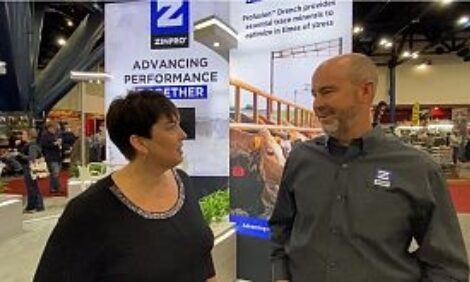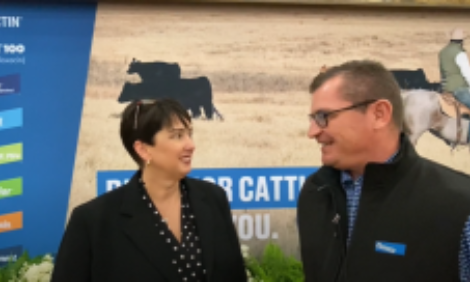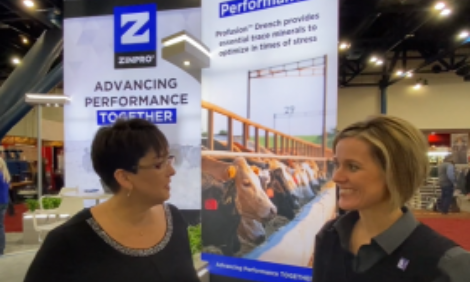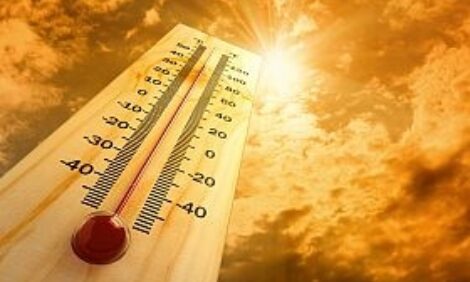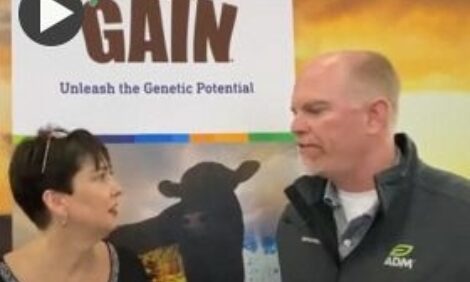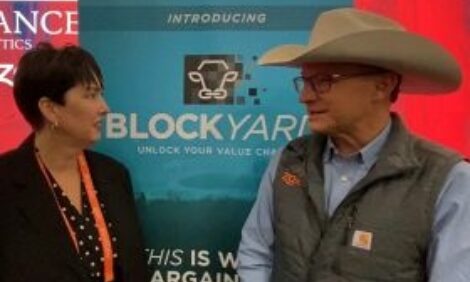



2022 NCBA: Producer margins vs. packer margins
Ethan Lane, VP Government Affairs at the US National Cattleman's Beef Association (NCBA), spoke to The Cattle Site about producer and packer margins at the NCBA convention in Houston on Tuesday.Part of Series:
Next Article in Series >
Ethan Lane, VP Government Affairs at the US National Cattleman's Beef Association (NCBA), spoke to The Cattle Site about producer and packer margins at the NCBA convention in Houston on Tuesday.
"The NCBA sits in a really unique position because we have state affiliates from coast to coast; we have cow-calf affiliates; we have feeder affiliates. We have such a broad spectrum of producers that are producing cattle around the country in different ways, and we sit at the intersection of all of these different takes on what to do with the spread that we've seen over the last couple years - the disparity between packer margins and producer margins on cattle," said Lane. "We've had policy for years on this range of issues and that has allowed us to engage in a lot of these conversations on The Hill, whether it's the creation of a cattle contract library, adding more transparency tools for producers, looking at carcass weights and delivery windows and the cattle marketing mandates that are being contemplated as well."
NCBA has had long-standing policy opposing government mandates that restrict a producer's ability to choose the best marketing method for them. Yet, there are a lot of affiliates that also feel very strongly that the current situation is different and that the government needs to do something about the lack of price discovery and the thin cash markets in some regions, he said.
"As we've engaged in these hearings and with members of Congress on this, that's really been our message - is we're bringing you a message of conflict in the industry," he explained. "We have half the industry on this side saying, 'don't mess up the market that I've built over the last 30 years' and we have the other side saying, 'give me access to a market that works for me' like their market's working for them."
Trying to balance those two sides is NCBA's role. While they don't make up policy in Washington, DC, NCBA's role is to take policy from our grassroots membership around the country.
"Sitting in a meeting like this this week is where the rubber reaches the road. We're going to get refreshed guidance from our members on which direction they want us to go by engaging in those conversations," he said. "We've done five hearings on Capitol Hill on cattle markets, and I don't think we're done yet and we're going to have more opportunities to provide input. The Hill is definitely watching this week. They're curious to see what's going to come out of this meeting."
The NCBA Cattle Conference presents a good opportunity to take a pulse and see what the different affiliates have learned over the last couple years and what their boards are thinking as far as where they want to go moving forward.
Agriculture has caught the attention of President Biden
President Biden has recently made multiple statements on competition in the meat packing industry. The White House has expressed repeated concern over American consumers paying more for meat while farmers’ profits have dwindled. The White House has laid blame at the feet of the four major packers in the US.
According to Lane, "There are a lot of challenges with inflation throughout the economy and escalating prices. [The beef industry] is not unique in that equation, but we definitely have received our fair share of attention for how those inflationary forces have impacted our supply chain. Our producers, the members in this building right now, haven't benefited from those elevated prices the way that other parts of the supply chain have."
The Biden Administration recently dedicated $1 billion to expand independent processing capacity, which means new funding for small to medium-size packing facilities across the country.
Lane sees this as a huge opportunity for for the cattle industry.
"You need those high capacity plants - they serve an important purpose of moving 660,000 or so cattle a week right through that system," he said. "We keep a lot of people fed with that beef, but adding more options for producers to market their cattle, adding more regional and local options that fit what they're doing in their part of the country is such an important opportunity. We're really excited that USDA is working on this and have been pleased with their offers of letting us input into the process. We look forward to continuing that conversation and seeing what develops. These are great things to be contemplating in a time when we have surging demand both domestically and overseas."





